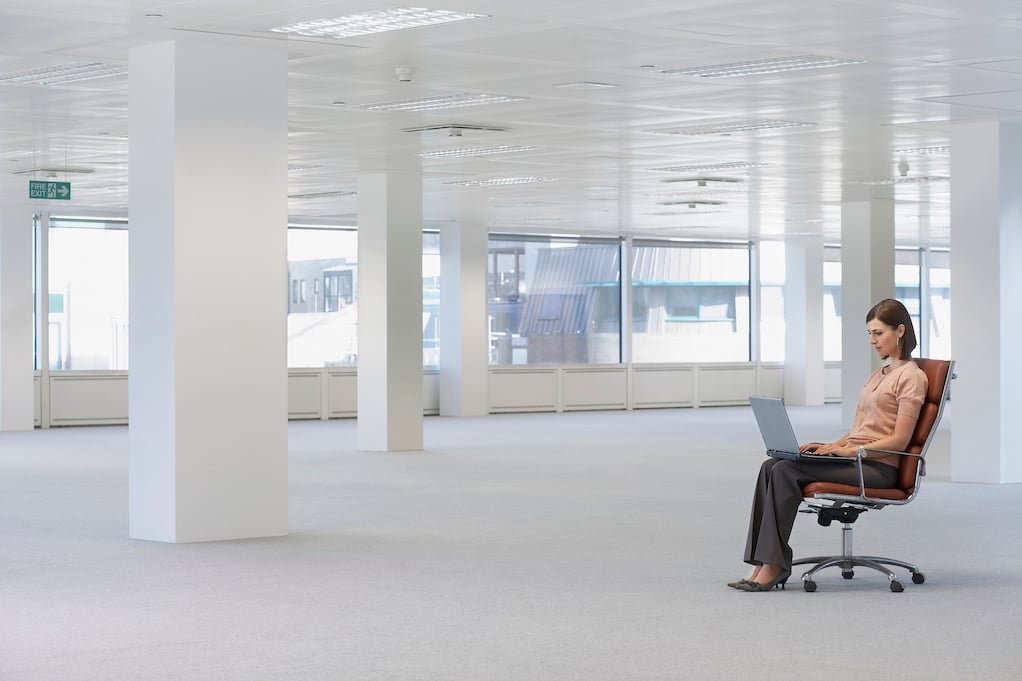As the maturing Commercial Mortgage-Backed Securities (CMBS) loans worth billions of dollars loom over the office market, distress continues to escalate. With approximately $103 billion set to mature in the second half of 2023 and another $126 billion in 2024, the debt market is bracing for a tumultuous period ahead, adding further pressure to an already challenging commercial real estate landscape.
Now, as CMBS delinquency reaches the highest levels since 2021, it’s time to evaluate who’s at the highest risk.
The Precarious CRE Landscape
Commercial properties, specifically offices, are largely becoming liabilities due to stalled occupancy rates, high interest rates, and about a million other circumstances stacking up against them. Hybrid work, economic uncertainty, and rampant layoffs have irreparably stunted the demand for office space.

And compound this with the fact that landlords are seeing less and less profit margins because they have been forced to offer too-good-to-be-true deals to lure in office tenants in this environment.
But now as a tidal wave of CMBS loans are set to hit the market in the coming months….The breaking point is about to be reached.
| “CMBS delinquency is at its highest level since the end of 2021, having risen for a fifth consecutive month.” -GlobeSt |
And if your landlord is suffering from low occupancy, they may be in the hot seat now. Their ability (or inability) to satisfy the debt requirements could have catastrophic implications on investor and tenant interests.
Now, with the delinquency rate over two and a half times what it was a year ago in July 2022, things aren’t looking great for a significant pool of property owners. And the alarms are being sounded by our country’s most prominent economic minds.
| “They should lose money. If people borrowed on commercial real estate and now the loans aren’t getting extended, too bad. That’s part of borrowing on 100% margin, which is what people were doing.” -Warren Buffett |
As mentioned, the CMBS loans maturing total approximately $103 billion in the second half of 2023 and an additional $126 billion in 2024. This will unleash a profound impact on the office market and corporate tenants. Most assuredly, this will lead to further financial stress for property owners and potential disruptions for tenants.
And as property owners grapple with refinancing challenges and potential defaults, tenants may face uncertainties during lease renegotiations, changes in ownership from landlord defaults, and potential disruptions to their business operations.

The delinquency rate for office spaces rose to 4.6 percent, marking a 16 percent increase from the previous month when it stood at 3.98 percent in May 2023. This month-over-month surge of 62 basis points indicates an almost unprecedented, consistent rise in office delinquency.
And if banks take on too many failing leases, we may be dealing with the inevitable: a looming bailout. Read CRE is Melting Down Fast. Is a Bank Bailout on The Horizon?
Red Flags for Higher Delinquency
Landlords that can't afford their debt service will be forced to hand over their keys to the banks.
And this likelihood is especially true if your building falls into one of the four red flags. Because some buildings are being hit harder than others as tenants opt for higher quality office buildings. And those that cannot live up to expectations are experiencing lower leasing and higher delinquency rates.
Stay on top of the latest CRE news by subscribing to our blog!
While the following categories are not necessarily death marks for properties, they are what the hardest hit buildings have in common:
1. Older Buildings
Everywhere, the push for better buildings has further devalued Class B properties, as a result there is a bigger delineation in the asset classes.
As a result, there is overwhelmingly less investor, tenant, and overall consumer interest in older commercial buildings. This represents properties constructed any time between 1980 and 2009.
On top of this, they face more expensive renovation costs if landlords choose to update them with modern features that may attract tenants. Because of this, they are not deemed to bring strong return on investment for landlords in this new environment, and it may be a wiser option for them in the long run to hand the keys back to the bank.
All said and done, our country’s older office buildings are turning into a horde of zombie properties. Tenants in older buildings should do everything they can to ensure they don’t get bitten and brought down by association with an outdated property and a failing landlord.

2. Buildings in Metropolitan Areas
Offices in metropolitan regions are among the hardest hit buildings and hold a lot of risk. This is reflected by high vacancies and dismal occupancy rates which can be considered a dormant vacancy rate. Because when those grossly under-occupied leases come due, it’s more likely than not that they’ll end up largely empty.
| "Price growth among urban properties has significantly trailed that of suburban properties since the pandemic began." -FS Investments |
On the other hand, suburban regions have lower overall office vacancy rates and are thus largely performing better than metropolitan regions like Los Angeles where the vacancy rate has reached 27%. As a result, suburbs are getting more interest from tenants and investors alike and are thus at a lesser risk for collapse.
According to GlobeST, “The prime reason is that many workers pivoted to remote work at the start of the pandemic to flee congested downtown areas, which left many downtowns empty. And since that time, many of those areas have experienced only a slow—albeit steady–return to offices.”
Now it shows no sign of stopping and with looming CMBS loans, urban environments are set to be slammed harder.
| “With a tidal wave of more than $1.5T in CMBS coming due in the next three years, numerous office building owners are expected to turn the keys over to lenders as office valuations plunge in major urban centers.” -GlobeSt |
3. Northern Regions
The North has been struggling to keep up with the booming success and population growth of the American South. In fact, the South has eclipsed the Northeast has the most profitable, heavy-hitting contributor to the nation’s GDP.
So many leading companies have been gradually cutting their ties to those locations because increasingly they stifle commercial success with excessive taxes, strict legislature, and egregious living costs.
And, highlighted by resounding low occupancy rates, Northern office markets are suffering more and are poised to be hit with further trouble on the horizon with loans approaching and half- occupied buildings approaching their expiration.

This combination of factors puts the Northern region at a greater risk in terms of commercial real estate and highlights the need for careful considerations and proactive measures to mitigate potential future difficulties.
3. Higher Crime Areas
An area’s crime risk also goes hand-in-hand with the quality and quantity of local amenities. Closeness to restaurants, shopping centers, or other useful spots is a key external driver behind a building’s suitability. A lack of options in a high-crime environment will significantly drive down occupancies.
In fact, high crime was the biggest driver behind the hardest hit buildings.

This is quite similar to the circumstances behind the push to suburbs. As remote working arrangement remains a top motivator for finding a new job, employees are less likely to accept positions that demand commuting. And if people don’t feel safe or comfortable commuting in, forget about it. Safety, comfort, and employee experience have been the top drivers of where to place an office. Learn how to Enhance Employee Wellbeing Through Optimization.
And in case you were wondering some notable cities that (not so coincidentally) are suffering from both low occupancy and high crime include:
- San Francisco
- Los Angeles
- New York
- Chicago
What Tenants Should Know
Overall, it is clear that the commercial real estate industry is experiencing significant changes, and landlords and investors must stay aware of these trends to navigate these challenging times. The evolving debt market landscape necessitates careful consideration and strategic planning for both property owners and tenants in navigating these challenges.
It is crucial to identify which office buildings are at higher risk of becoming casualties of the office apocalypse especially as delinquency is rising month over month, to reach the highest it’s been since 2021.
To stay on top of the latest in landlord defaults, corporate tenant tips, and everything commercial real estate, subscribe to our blog today!








